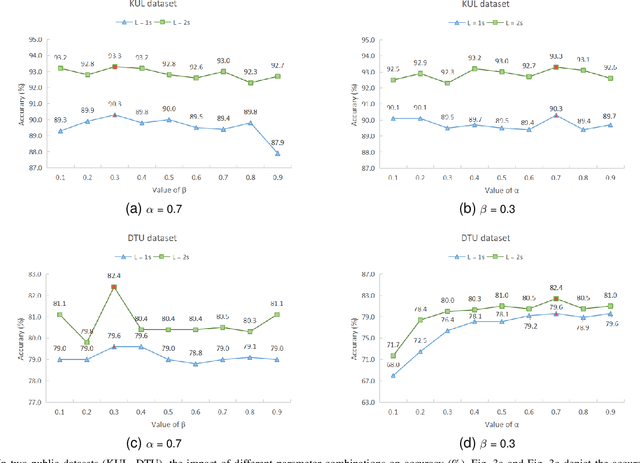DGSD: Dynamical Graph Self-Distillation for EEG-Based Auditory Spatial Attention Detection
Paper and Code
Sep 07, 2023



Auditory Attention Detection (AAD) aims to detect target speaker from brain signals in a multi-speaker environment. Although EEG-based AAD methods have shown promising results in recent years, current approaches primarily rely on traditional convolutional neural network designed for processing Euclidean data like images. This makes it challenging to handle EEG signals, which possess non-Euclidean characteristics. In order to address this problem, this paper proposes a dynamical graph self-distillation (DGSD) approach for AAD, which does not require speech stimuli as input. Specifically, to effectively represent the non-Euclidean properties of EEG signals, dynamical graph convolutional networks are applied to represent the graph structure of EEG signals, which can also extract crucial features related to auditory spatial attention in EEG signals. In addition, to further improve AAD detection performance, self-distillation, consisting of feature distillation and hierarchical distillation strategies at each layer, is integrated. These strategies leverage features and classification results from the deepest network layers to guide the learning of shallow layers. Our experiments are conducted on two publicly available datasets, KUL and DTU. Under a 1-second time window, we achieve results of 90.0\% and 79.6\% accuracy on KUL and DTU, respectively. We compare our DGSD method with competitive baselines, and the experimental results indicate that the detection performance of our proposed DGSD method is not only superior to the best reproducible baseline but also significantly reduces the number of trainable parameters by approximately 100 times.
 Add to Chrome
Add to Chrome Add to Firefox
Add to Firefox Add to Edge
Add to Edge